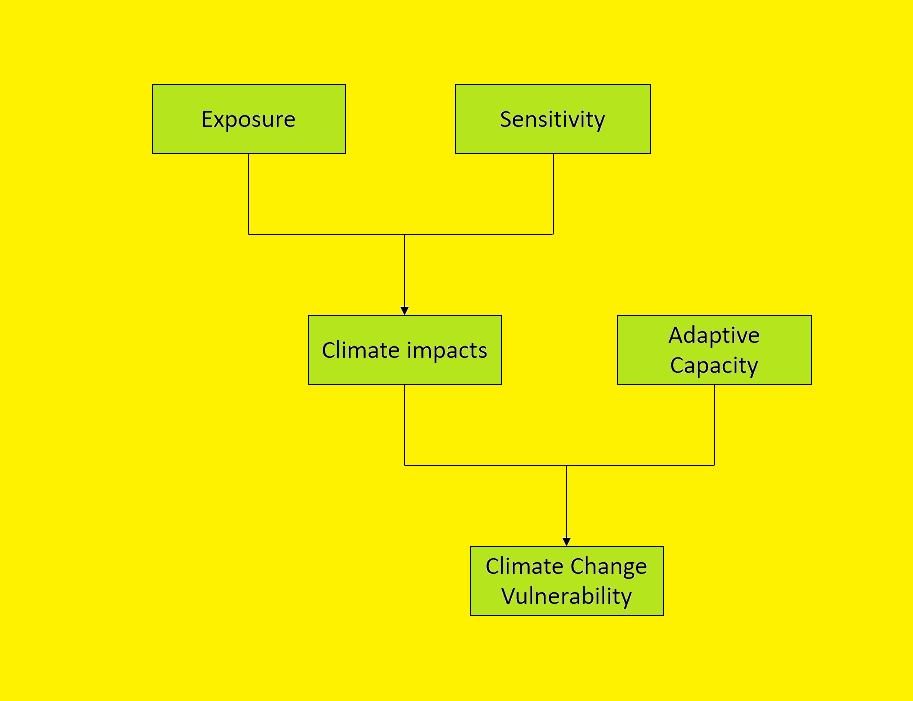Climate change vulnerability has various interpretations. Vulnerability changes with the scale of observation and the system in question. A population as a whole may not be vulnerable to climate change, but a community within the population can be extremely vulnerable to climate change (if they live in the coast, for example). Similarly, human populations in a location may not be vulnerable, but the wildlife of that location may be.
Climate science has come up with three terms that now help determine the extent of climate change vulnerability, and a means to assign indicators to measure this vulnerability.
Exposure to climate change
Exposure is defined as the contact between a system* and the climate. Exposure is external to the system: climate events from outside is impacting the system and having an effect.
Common examples of exposure to climate risks include exposure to climate variations, extreme events, and diseases.
Consider a coastal community within 10 km from the sea. This community would be exposed to cyclones, rising sea levels and saltwater intrusion in aquifers.
Sensitivity to climate change
Sensitivity is the degree to which the system is affected by the exposure to risks. The concept is similar to immunity: if you don’t get the seasonal flu every time the weather changes (exposure), it means you are less sensitive to the changing weather. This is an internal characteristic of the system.
Our coastal community would be more sensitive to cyclones if their livelihoods are dependent on sea-based tourism, or if there are no wind-resistant trees in their community space, or because they live in areas below the sea level (as is the case with New Orleans, USA).
Exposure and sensitivity to climate risks result in the “climate impact” on the system in question.
Adaptive Capacity
Adaptive capacity refers to the ability of an individual, household or community to develop resilience and adjust to the climate risks. This adaptive capacity is a function of access to financial, technical, educational, and community resources.
If our coastal community has access to early warnings of cyclones, and has the ability to move to higher ground fast, they would be considered to have high adaptive capacity.
The relationship between the three terms…
The three aspects of a system can be combined to define the vulnerability to climate change.

In reality, the three aspects are highly interlinked. For example, increasing adaptive capacity also has the effect of reducing the sensitivity of the system to climate change.
The coastal community in the previous examples may reduce their community’s sensitivity to cyclones by investing in an intensive tree plantation program that protects their livelihoods and assets from the cyclone. Their ability to invest, is their adaptive capacity. If the community is able to pitch in and create a fund to finance tree planting, it means they have high adaptive capacity.
Similarly, building resilient infrastructure reduces exposure to climate risks.
High vulnerability is defined as a situation where the exposure to climate risks is high, the sensitivity of the system is high and the adaptive capacity is low.
Climate change adaptation projects and programs around the world employ this mechanism of assessing climate change vulnerability, and accordingly define indicators and measures to improve the resilience of a community towards climate risks.
*The system is any area we are observing over a defined time period.

[…] varies immensely according to people´s ability to respond to those environmental changes – or adaptive capacity. In humans, this capability to cope is influenced by certain social factors, such as power […]
LikeLike